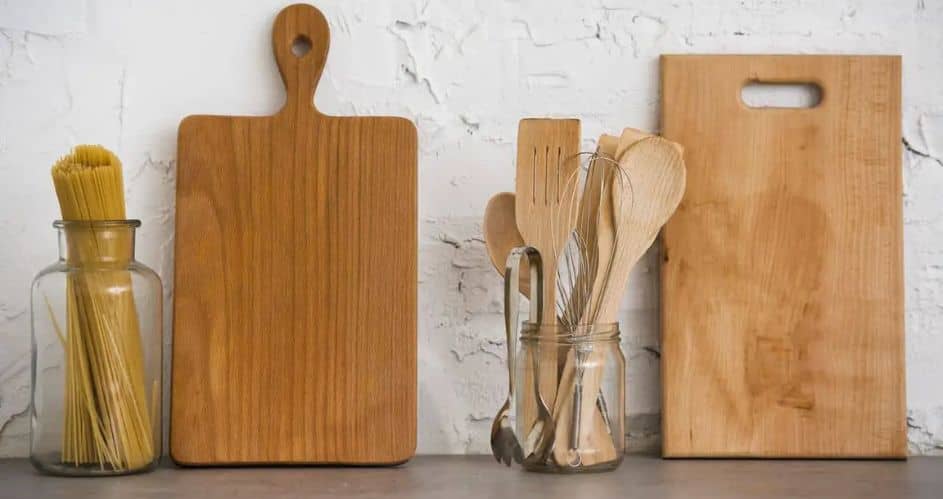
Because of its toughness and lovely sheen, tung oil has grown in popularity for treating wood surfaces. However, it’s vital to ensure a product is safe before applying it to areas that come into contact with food. The safety of tung oil as food is a common concern. Let’s investigate this issue to see if tung oil is good for food tasks.
The tung tree’s nuts are the source of tung oil, which has been used for ages to polish wood. It has exceptional longevity, a natural glossy sheen, and water resistance. But there are worries about its potential health dangers and food safety when using it on surfaces like cutting boards or kitchen countertops.
Keeping a secure environment for food preparation is crucial, and having awareness about the materials we utilize is pivotal.
Considering its makeup, potentially harmful components, and essential measures, we shall examine in this article, “Is tung oil food safe”? By being informed, you can guarantee the security of your food-related projects while using tung oil’s aesthetic advantages.
What is Tung Oil?
Tung oil is a drying oil made from the seeds of the tung tree, sometimes known as China wood oil or nut oil. It is an East Asian native that has long been utilized in conventional Japanese and Chinese medicine and handicrafts.
Properties of Tung Oil
Woodworking and other industries are keen to acquire tung oil due to its exceptional properties. Being a drying oil, it polymerizes and produces a solid, shielding coating when exposed to the air. Tung oil is appropriate for outdoor application because it is resistant to chemicals, heat, and water.
Tung Oil in Woodworking
Due to its capacity to enhance the inherent beauty of the wood while offering excellent protection, tung oil has been widely utilized in woodworking.
It deeply penetrates the wood, producing a long-lasting finish that enhances the colour and pulls out the grain patterns. Many woodworkers prefer tung oil for its natural, matte appearance and ease of application.
Is Tung Oil Food Safe?
Pure tung oil is generally considered food safe once fully cured. During the curing process, the oil undergoes polymerization, creating a solid, inert film resistant to water and chemicals. This cured film provides a protective barrier between the wood surface and the food, minimizing the risk of contamination.
Alternatives to Tung Oil for Food Contact
While tung oil is generally considered food safe once fully cured, some prefer alternative finishes for food-related items. Some of these substitutes are walnut oil, Beeswax, and food-grade mineral oil.
These coatings are frequently used on cutting boards, wooden cutlery, and other kitchen accessories since they are made for food contact.
How to Apply Tung Oil Safely?
Following the correct methods is crucial to guarantee the safe application of tung oil on food-related items. Before application, verify that your tung oil is genuine and uncontaminated.
To guarantee practical tung oil application, cleaning the wood surface thoroughly and eliminating all impurities beforehand is essential.
Apply tung oil in thin, even coats, letting each dry completely before moving on to the next. It is necessary to allow sufficient curing time to ensure the oil is fully polymerized and food safe.
Tung Oil and Allergies
While most people can safely utilize tung oil, it is crucial to know that particular individuals may exhibit allergic or sensitive responses to the oil.
People vulnerable to it may develop skin irritation or allergic reactions from using tung oil. When applying tung oil, it is advised to use gloves that are waterproof and work in well-ventilated environments.
Maintaining Tung Oil-Finished Surfaces
Regular cleaning and occasional reapplication may be required to maintain tung oil-finished surfaces. Avoid using harsh chemicals that can harm the oil finish and instead clean the surface with a light soap and water mixture. Applying a thin layer of tung oil will revitalize and protect the wood if its surface looks dry or worn.
The Bottom Line
Tung oil is generally considered food safe once fully cured. Its unique properties make it an excellent choice for woodworking projects involving food-related surfaces.
However, some prefer alternative finishes explicitly designed for food contact. When applying tung oil, following proper procedures to ensure its safe use is crucial. Tung oil is versatile and also finds applications in various non-food contact areas.
FAQs
Is tung oil toxic?
Tung oil is frequently non-toxic after it has totally dried. However, care should be taken when using the oil, as some people can have allergies or intolerance to it.
Can tung oil be used on cutting boards?
Yes, tung oil can be used on cutting boards. Ensure that the tung oil has fully cured before using the cutting board for food preparation.
Can tung oil be applied over existing finishes?
Tung oil is primarily used as a penetrating finish and may not adhere well to existing finishes. It is recommended to remove the old finish before applying tung oil.
